Medium-late high-yielding hybrid of Kolya cabbage f1
Kolya f1 is a young hybrid of white cabbage that has already fallen in love with vegetable growers. The choice of gardeners is due to its high yield, resistance to a number of diseases, the possibility of universal application, pleasant sweet taste and long-term storage of heads. We offer you to learn more about the merits of the hybrid and its requirements for planting and growing.
The content of the article
Description of hybrid cabbage Kolya F1
This is a hybrid of first generation white cabbage, bred by breeders from the Netherlands. It is characterized by large, dense, rounded heads of cabbage, suitable for universal use and without bitterness in the taste.
Breeding history
The hybrid was bred by Dutch breeders Seminis Vegetable Seeds, which specializes in seed production. It was included in the State Register of Russia in 2010.
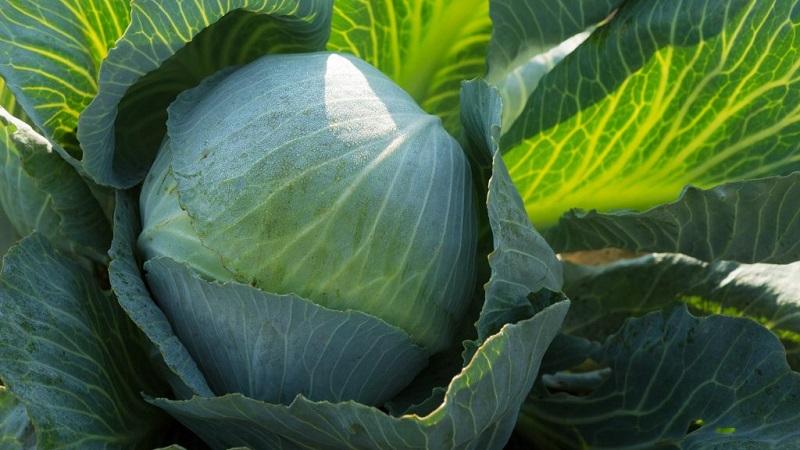
Chemical composition, trace elements and vitamins, useful properties
100 g of cabbage contains:
- ascorbic acid - 36.6 mg;
- vitamin E - 0.15 mg;
- vitamin B6 - 0.124 mg;
- vitamin B1 - 0.061 mg;
- vitamin A - 0.03 mg;
- potassium - 170 mg;
- calcium - 40 mg;
- phosphorus - 26 mg;
- sodium - 18 mg.
Regular consumption of white cabbage helps to avoid the development of atherosclerosis, helps to improve the functioning of the gastrointestinal tract, the treatment of gastric and duodenal ulcers. The vegetable is useful for insomnia, headaches and spleen diseases, increases appetite, has a diuretic and mild laxative effect.
Application features
The heads of this cabbage are used in fresh, fermented, salted, added to vegetable salads and first courses, stew and canned.
Ripening period and yield
This is a mid-late ripening hybrid - heads of cabbage ripen 130-135 days after disembarkation seedlings in open ground.
Average yield - 370-498 c / ha. The output of marketable products is 92%.
Reference. The maximum yield was recorded in the Ryazan region - 652 c / ha.
Disease, pest and cold resistance
Kolya f1 is resistant to mucous and vascular bacterioses, fusarium, thrips. With improper care and unfavorable climatic conditions, a hybrid can hit:
- blackleg;
- keel;
- white rot;
- cabbage flies;
- whites;
- scoops;
- cabbage aphids and bugs.
Mature plants tolerate lowering the air temperature to –6… –8 ° C.
Characteristics, description of the appearance of leaves and head of cabbage, taste
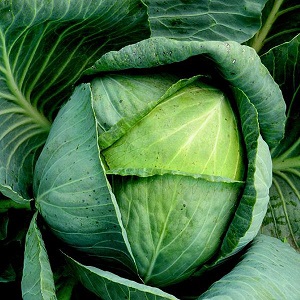 The hybrid forms dense, uniform heads of cabbage of a rounded, slightly flattened shapewhich grow up to 22.5 cm in diameter and weigh 2-2.5 kg; some specimens reach a mass of 4-8 kg.
The hybrid forms dense, uniform heads of cabbage of a rounded, slightly flattened shapewhich grow up to 22.5 cm in diameter and weigh 2-2.5 kg; some specimens reach a mass of 4-8 kg.
Raised rosette, medium-sized leaf cover, transversely oval, vesicular, with slightly wavy edges, gray-green colored and covered with a strong waxy coating. The heads of cabbage are white in section. The inner stump is medium in size, the outer length is 9-10 cm.
The cabbage tastes juicy and sweet, without bitterness.
Growing regions and climate requirements
Advantages and disadvantages
Hybrid advantages:
- immunity to diseases and pests characteristic of the culture;
- high productivity;
- the possibility of mechanical harvesting;
- resistance to cracking;
- long shelf life and transportability;
- pleasant taste without bitterness;
- the possibility of universal application of heads of cabbage;
- unpretentious care;
- the ability to adapt to climatic conditions;
- the possibility of long-term standing on the vine after ripening.
Among the minor disadvantages are high outer stump, which necessitates regular hilling.
Difference from other varieties and hybrids
Comparison of Koli f1 with other mid-late ripening hybrids is presented in the table:
| Hybrid | Head shape | Average weight of a head of cabbage, kg | Productivity, c / ha |
| Kolya | Rounded, slightly flattened | 2-2,5 | 370-498 |
| Avak | Rounded flat or rounded | 2-3,1 | 392-609 |
| Aggressor | Rounded | 2,5-3 | 431-650 |
| Adapter | Rounded flat | 1,8-2,3 | 280-342 |
| Barton | Rounded flat | 2,2-3 | 451-859 |
| Arrivist | Rounded | 1,8-2,1 | 397-492 |
Interesting on the site:
The best varieties of cabbage for pickling and storing for the winter
Features of planting and growing
The hybrid is suitable for growing seedling and seedling methods... The main thing is to take into account the climatic conditions of the region, choose the right planting site, prepare seeds and a site.
Preparing for landing
Seeds for seedlings are sown in early April... More accurate timing is calculated, focusing on the fact that seedlings appear 8-10 days after sowing, and seedlings are planted in the ground when its age reaches 50-55 days.
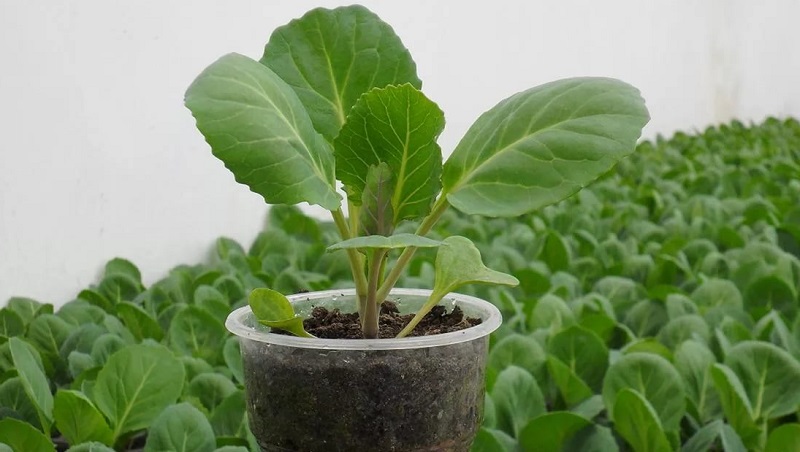
The soil is pre-treated with a solution of potassium permanganate or fungicide "Maxim". The planting material is disinfected before sowing - the seeds are soaked in a dark pink solution of potassium permanganate for 20 minutes, after which they are washed with clean water and dried.
Reference. The substrate for sowing seeds is prepared from equal parts of sod land, peat and sand with the addition of 0.5 tbsp. wood ash per 2 liters of soil mixture.
The prepared soil mixture is poured into low wooden boxes, plastic containers or other containers, lay the seeds at a distance of at least 1 cm from each other, cover them with a layer of earth no more than 1.5 cm thick and spray them with settled water from a spray bottle.
The container with seeds is covered with plastic wrap and put away in a warm place at a temperature of + 20 ° C. After 8-10 days, when seedlings appear, the temperature is reduced to + 8 ... + 10 ° C in order to avoid stretching and seedling diseases. After another 2 weeks, the daytime temperature is increased to + 15 ... + 17 ° C, and the nighttime temperature is left the same.
When the sprouts form a pair of true leaves, seedlings are dived and nitrogen fertilizers are applied, for example, urea solution. In the phase of appearance of 3-4 leaves, seedlings are fed with mineral fertilizers for seedlings.
15 days before transplanting seedlings to the beds, the seedlings begin to harden... Containers with seedlings are taken out into fresh air, first for 2 hours, then the time is gradually increased. In the last few days, seedlings are not taken indoors.
How to make a seedless plant
In the southern regions, seedless cultivation of Koli f1 is acceptable... To do this, in the fall, the site is dug up, cleaned of plant residues and other debris, and fed with compost or humus.
From the beginning of April to the end of May, seeds are sown in open ground, deepening by 1.5-2 cm and observing a distance between the seeds of 35-40 cm, and sprinkled with a layer of earth. Seedlings with this method of planting appear on 4-6 days.
Ground requirements
The hybrid prefers fertile, loose, moisture-permeable soil with good aeration and low or neutral acidity. The best option is loam.
Timing, scheme and landing rules
Seedlings are transplanted into the ground at the age of 50-55 dayswhen the shoots form 5-6 true leaves.
Landing algorithm:
- 2 hours before transplanting, the seedlings are watered abundantly.
- In the prepared area, beds are formed at a distance of 50 cm from each other.
- Every 35 cm, dig the landing holes, add 1 tbsp. wood ash, 1 tbsp. l. double superphosphate and 1 tsp. urea.
- Seedlings are removed from containers and placed in holes, deepening to 1 true leaf.
- The wells are filled with water and, after it has been absorbed, they are covered with soil.
- The soil around the seedlings is mulched to prevent rapid evaporation of water and the formation of a dry crust on the surface.
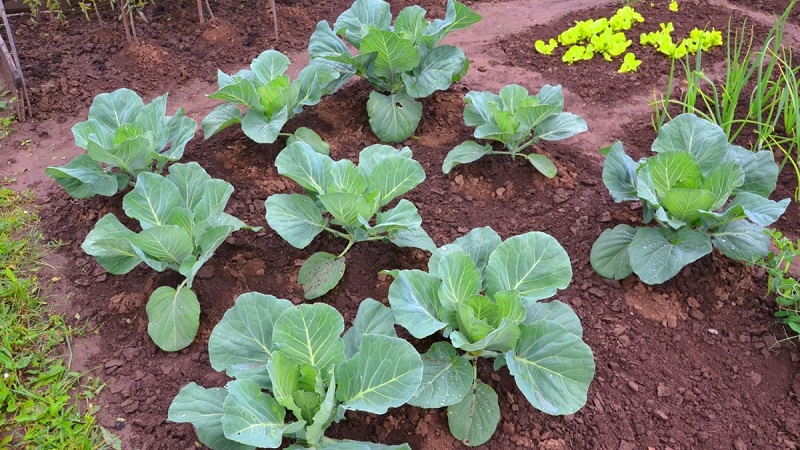
The nuances of care
During the growth of leaf rosettes, cabbage is watered every 5-7 days, during a drought - every 3 days. When watering, they are guided by the weather conditions and the condition of the soil - it should not dry out, but the stagnation of moisture is unacceptable. During the period of setting heads of cabbage, the frequency of watering is increased - the soil should be moistened by at least 70-75%.
Reference. For irrigation, use warm, settled water.
Loosening to a depth of 5 cm is carried out for the first time 1.5-2 weeks after planting the seedlings in the ground, then - after each watering or rain, but already 8 cm deep. This improves the access of oxygen and moisture to the roots, prevents the formation of a dry crust on the soil surface.
So that the heads of cabbage do not fall to one side, they are spud 20 days after planting seedlings in the ground and after 2 weeks.
Fertilizers are applied 4 times during the growing season, alternating organic (cow dung solution, wood ash) and mineral (with a high content of potassium, nitrogen and phosphorus) feeding.
Disease and pest control
Diseases and pests affecting Kolya f1 are presented in the table:
| Disease / pest | Signs | Treatment / prevention |
| Blackleg | The root part of the stem darkens, gradually becomes brown and rots. | The infected heads of cabbage are removed. The remaining plantings are treated with colloidal sulfur and preparations "Oxyhom", "Abiga-Peak". |
| Keela | Plants develop slowly, wither, and bump-shaped growths form on the roots. | |
| White rot | On the heads of cabbage, white spots and gray bloom are formed. | |
| Cabbage flies | Plants slow down in development, the leaves dry and acquire a blue-lead hue. | To prevent the attack of insects, cabbage is twice treated with an 80% solution of technical chlorophos or preparations "Fury", "Nemabakt", "Iskra-M". |
| Whitefish and scoops | Butterfly eggs can be seen on the underside of the leaves. Caterpillars gnaw on leaves and heads of cabbage, leaving a dark green discharge. | |
| Cabbage aphids and bugs | The petioles of the testes are bent and stunted, the leaves turn yellow and lose color. | |
| Cabbage bugs | They pierce the leaves and feed on the juice, which is why light yellow spots form on the cabbage. |
The use of poisonous chemicals is allowed only until the moment the formation of heads of cabbage.
Growing difficulties
Problems that may arise when cultivating this hybrid:
- the removal of seed shells to the surface of the substrate along with the seedlings - the planting material is not sufficiently buried when sowing;
- the formation of loose heads of cabbage with small leaves - cabbage grows in the shade, it lacks light.
Harvesting and storage
Harvested in late summer - early autumn in dry weather at an air temperature of + 4 ... + 7 ° C. The ripeness of the heads of cabbage is determined by their density. The heads of cabbage are pulled out of the ground, the stump is chopped off immediately before harvesting for storage.
The harvested cabbage is examined and sorted, the damaged specimens are laid aside and the densest vegetables with two covering green leaves are selected for storage.
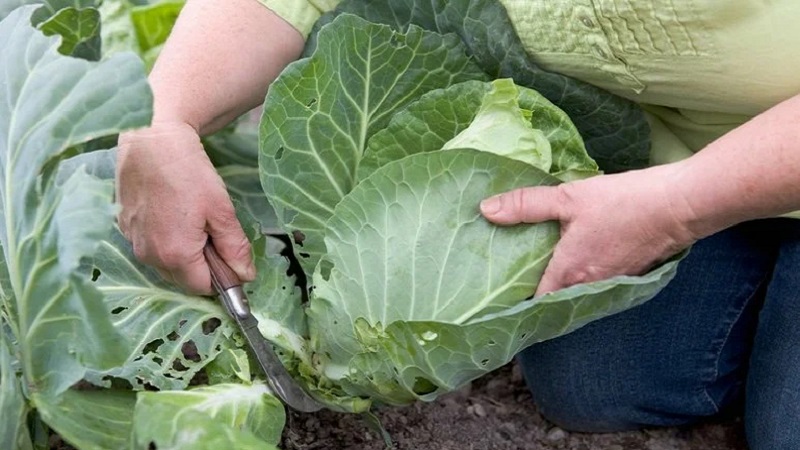
Heads of cabbage suitable for storage are laid out on a wooden deck in 2-3 rows with stumps up or hung on the crossbars, having previously tied in pairs.
Under optimal conditions (at a temperature of 0 ... + 2 ° C and air humidity 91-97%) the harvest is stored within 10 months without loss of marketability and taste.
Advice and feedback from experienced gardeners
Experienced farmers recommend:
- Plant Kolya f1 after garlic, peas, potatoes, carrots, beans, onions. The worst predecessors are arugula, radish, cruciferous crops, radish.
- Do not plant cabbage in the same place earlier than 4 years later.
- Small frosts are allowed before harvesting. Heads of cabbage that have undergone a drop in air temperature to –2… –3 ° C are formed as juicy as possible.
Reviews of vegetable growers about Kolya f1 cabbagepresented on specialized forums are positive.
Evgeny, Moscow region: “We grow cabbage on the site not only for our own needs, but also for sale, so we plant different varieties. At the same time, Kolya f1 occupies most of the area - it has a high yield, beautiful, dense and tasty heads of cabbage that tolerate transportation well and are stored for a long time. Well, and a little more commercial benefit - very few people know this cabbage, so they often buy it as a novelty, exclusive. ".
Marina, Samara: “I first planted this hybrid 3 years ago and since then I don't even want to try other varieties. Cabbage requires minimal maintenance, the heads of cabbage ripen together, do not spoil and do not crack, if the harvest is not immediately harvested, their taste is excellent - a juicy, sweet, delicate vegetable, completely without bitterness. I am pleased with the shelf life - more than six months without the slightest hint of damage ".
Conclusion
With practically no drawbacks, the Kolya f1 cabbage hybrid has many positive characteristics, including the ability to adapt to the climate of different regions, abundant yield, immunity to diseases, unpretentious care, high marketability and taste of heads.